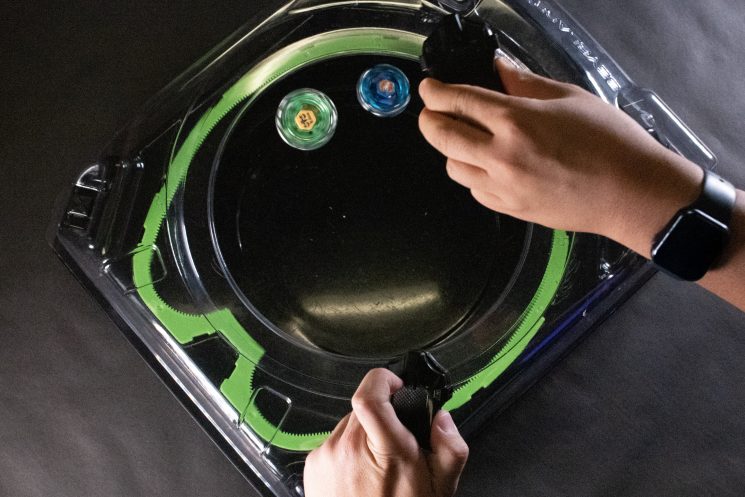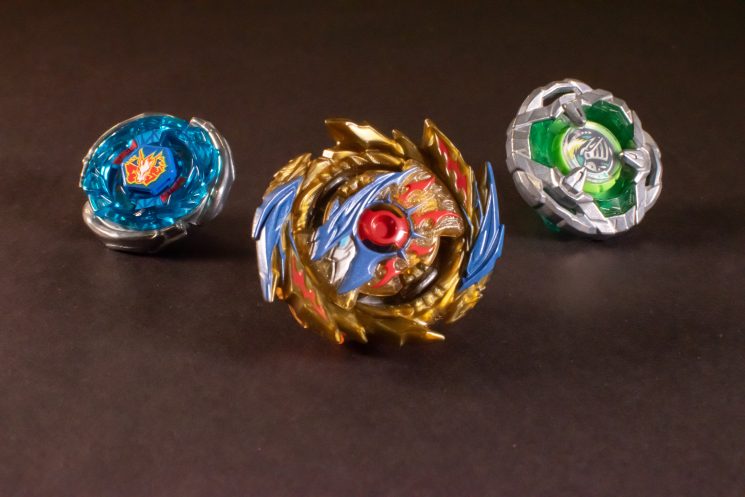
By Vaughn Bui
“3, 2, 1, let it rip!”
It’s a phrase we’ve all heard or said in our childhoods. Clanks and crashes of metal and plastic drew crowds who gathered to see the last one spinning. Those who were competing were even more focused on their Beyblade, gripping their launchers in suspense. The hopes and dreams of the competitors would be shattered forever with a loss; the stakes were that high. To other people, it may seem like a silly little game.
The spinning top toy is a staple in many regions throughout the world. In the United States, we may often see the classic toy as the Beyblade. Beyblade refers to the metal or plastic spinning tops, but it also refers to the Beyblade franchise as a whole, which is owned by Takara Tomy.
Present in many children’s childhoods, It’s a simple yet exciting game: you take a Beyblade and load it in the launcher, yell the iconic “let it rip!” and pull as hard as you can to get your Beyblade to take down your opponents. The simple formula of the game has been unchanged throughout its 25 year history. However, there have been four distinct generations of Beyblade with each generation innovating ways to make the game more exciting.

Plastic Generation
The Plastic Generation was the first era of Beyblade. The Ultimate Dragoon or Spin Dragoon was the first Beyblade released in 1999. Labeled as an “attack” top, the Dragoon would spin at high speeds which brought short and exciting fights between Beyblades. The Plastic Generation would also see the series “Beyblade” (2001), with the generation lasting until 2003.
Metal Fight Beyblade
The anime “Beyblade: Metal Fusion” (2009) would mark the second generation of Beyblade. Takara Tomy would redesign Beyblades with metal exteriors to give the tops better stability and performance. Customization would be introduced as Beyblades were designed to have interchangeable parts with components of different Beyblades being able to be fitted onto others. Metal Beyblades would also introduce a new mechanic of “spin stealing” with the Beyblade “Meteo L-Drago”, adding a unique twist to Beyblade fights. Metal fight Beyblades would end with the end of the “Beyblade: Metal Fusion” anime in 2012.
Beyblade Burst
Beyblade Burst, the third generation of Beyblade was launched alongside the series “Beyblade Burst” (2016), returning to plastic exteriors with a new ability: the burst mechanic. When Beyblades were fighting, there would be a chance in which a Beyblade could “burst” and be completely disassembled signaling their loss. To make the burst mechanic possible, Beyblades were easier to assemble than Metal Fusion Beyblades with parts being able to be snapped on within seconds. The Beyblade Burst anime would end in 2021, alongside the Burst line of Beyblades.
Beyblade X
The newest line of Beyblades, “Beyblade X” (2024) would improve upon Beyblade Burst drastically by making assembly simpler with all Beyblades having three distinct parts. These new Beyblades kept the burst mechanic of Beyblade Burst while bringing back Metal Fight Beyblade exteriors. The introduction of gears on the sides of an arena, as well as on the Beyblades themselves, allowed Beyblades to accelerate at high speeds to hit opposing Beyblades with even greater force.
Final thoughts
Beyblade is special in that people of all ages can enjoy its thrilling battles. It’s a franchise that has evolved and adapted to make the game as fun as possible. So, when it’s time for you to launch your own Beyblade, never forget to say the iconic line, “3, 2, 1, let it rip!”





